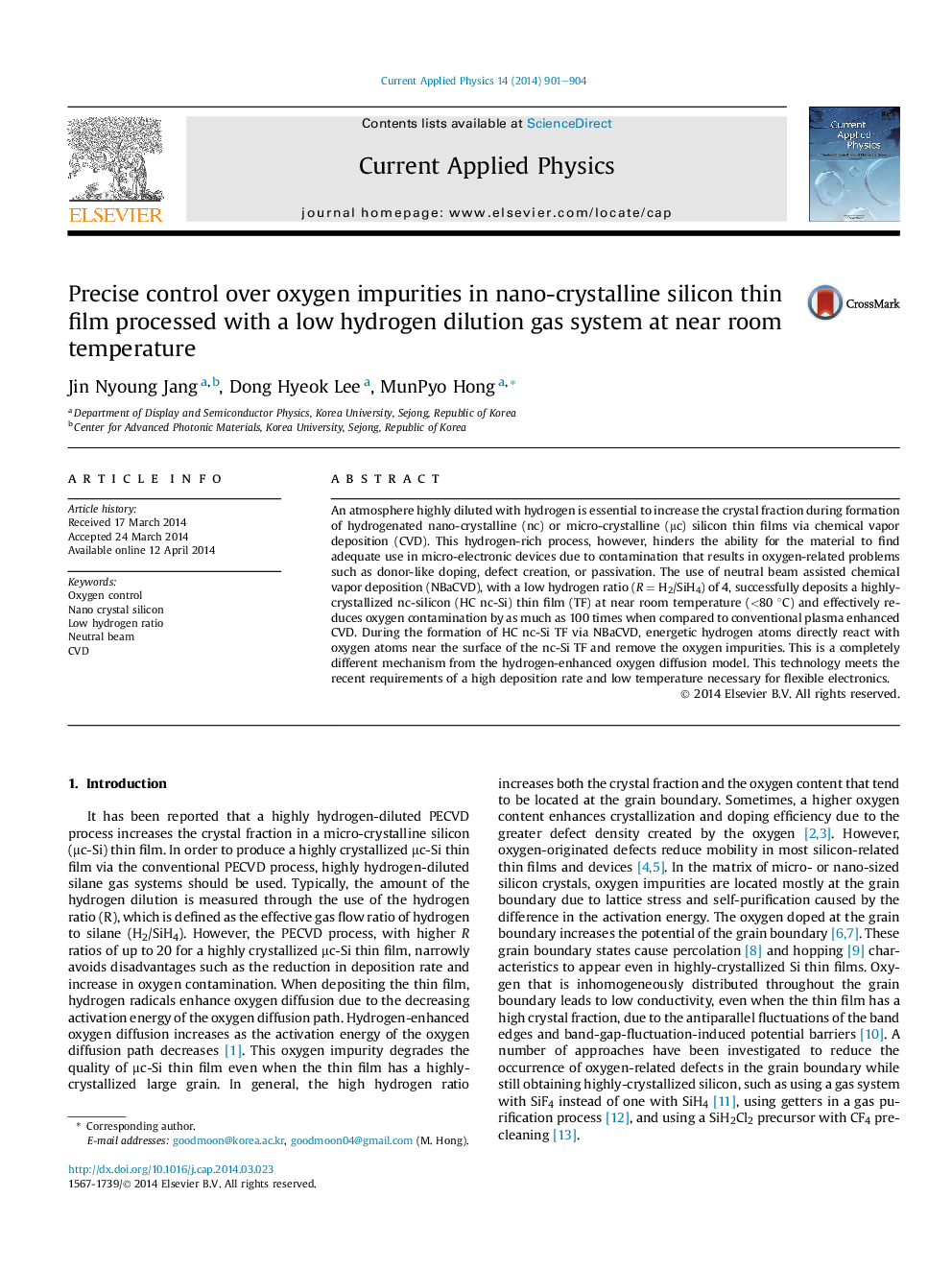| Article ID | Journal | Published Year | Pages | File Type |
|---|---|---|---|---|
| 1786370 | Current Applied Physics | 2014 | 4 Pages |
•Increasing neutral beam energy increase crystal fraction, decrease oxygen contamination at low hydrogen ratio.•We found that the energetic hydrogen atoms directly react with and remove oxygen at low temperature.•Energetic hydrogen atom is different from hydrogen enhanced oxygen diffusing model.•NBaCVD process can achieve highly crystalized nc-Si thin film at low hydrogen and low temperature.
An atmosphere highly diluted with hydrogen is essential to increase the crystal fraction during formation of hydrogenated nano-crystalline (nc) or micro-crystalline (μc) silicon thin films via chemical vapor deposition (CVD). This hydrogen-rich process, however, hinders the ability for the material to find adequate use in micro-electronic devices due to contamination that results in oxygen-related problems such as donor-like doping, defect creation, or passivation. The use of neutral beam assisted chemical vapor deposition (NBaCVD), with a low hydrogen ratio (R = H2/SiH4) of 4, successfully deposits a highly-crystallized nc-silicon (HC nc-Si) thin film (TF) at near room temperature (<80 °C) and effectively reduces oxygen contamination by as much as 100 times when compared to conventional plasma enhanced CVD. During the formation of HC nc-Si TF via NBaCVD, energetic hydrogen atoms directly react with oxygen atoms near the surface of the nc-Si TF and remove the oxygen impurities. This is a completely different mechanism from the hydrogen-enhanced oxygen diffusion model. This technology meets the recent requirements of a high deposition rate and low temperature necessary for flexible electronics.
